Jammu & Kashmir
About Jammu & Kashmir
Rightly known as the ‘Crown of India’, the state of Jammu & Kashmir’ indeed lives up to its nickname of being the ‘Paradise on Earth’. As quoted by the Mughal Emperor Jehangir, “If there is a heaven on earth, it’s here, it’s here, it’s here”, Jammu & Kashmir casts a spell on everyone who visits here. It is a dream of every Indian traveller to visit this paradise, at least once a lifetime. A holiday destination for every reason and for every season is this land that inspired poets since centuries.
Srinagar

Srinagar, popularly known as ‘Paradise on Earth’ and ‘Venice of the East’, is situated in the beautiful valley of Kashmir. Located on the banks of the River Jhelum, the city is renowned for its beautiful lakes, houseboats and numerous Mughal gardens
Things to Do
Shikara ride
Capturing the beauty of Srinagar in lens on the slow movements of Dal and Nagin Lakes through Shikara ridesis one of the most relaxing aspects of holidays in Jammu and Kashmir. The views of colourful houseboats and shikaras on the banks of lakes add hues to the surrounding charm and tranquility.
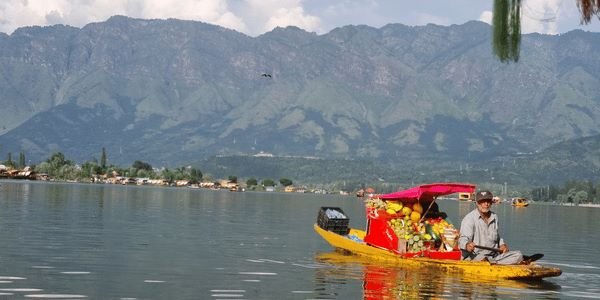
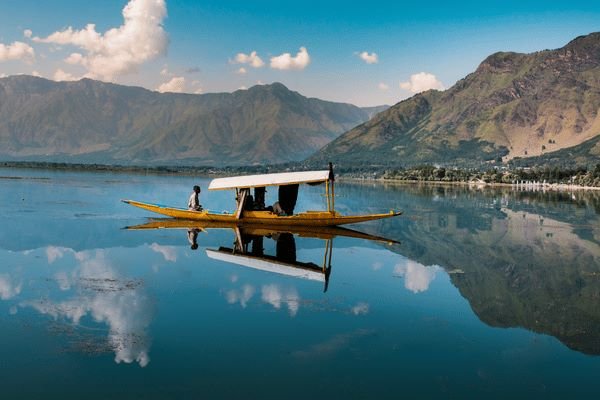
Dal lake
The Jewel of Srinagar, the Dal Lake is synonymous to a visit to Srinagar and almost a visual definition to the town. Spread over 15 kms, it is the second-largest lake in Jammu & Kashmir. The mirror-like Dal Lake reflects the peaks of the Pir Panjal mountains while the colourful shikaras (gondolas) float around. The houseboats and shikaras are its main attractions. The Dal Lake of Srinagar is also popular for the floating market (known as Raad) where vendors have their own Shikaras and are not shy of approaching tourists with their most endearing handicrafts, saffron, edibles and even ice creams in tow. Ice-skating during winter on the frozen Dal Lake also attracts many tourists.
Shankaracharya Temple
The Shankaracharya Temple in Srinagar, located on top of the Shankaracharya Hill, is dedicated to Lord Shiva and is one of the oldest shrines in Kashmir. Situated at a height of about 1100 feet on the south-east of the city, this sacred temple offers splendid views of the valley and the snow clad mountains of the Pir Panjal range.
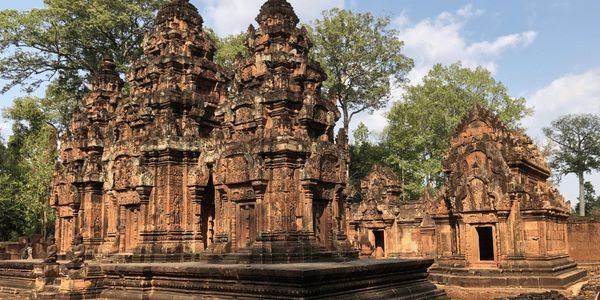
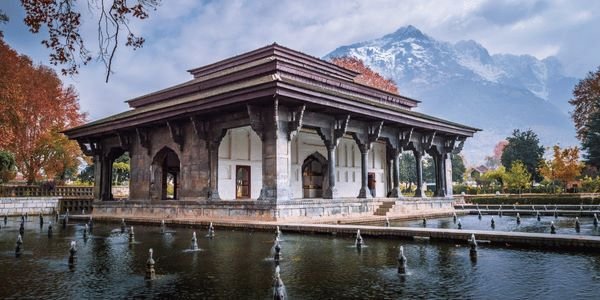
Shalimar Bagh
Shalimar Bagh is a beautifully laid out Mughal garden, the largest of the three Mughal gardens in Srinagar (the other two being Nishat Bagh and Chashme Shahi). This pristine attraction was built in the year 1619 by the Mughal emperor Jahangir for his beloved wife Nur Jahan and lies overlooking the scintillating waters of the Dal Lake. The chini khanas or arched niches placed behind waterfalls and the chinar trees are the highlights here.
Nishat Bagh
The Nishat Bagh is a 12 terraced garden located near Srinagar’s famous Dal Lake. It is the second-largest Mughal garden in Kashmir after Shalimar Bagh. Popularly known as “Garden of Bliss”, it has a splendid Mughal central water channel with several fountains, which is surrounded by tall Chinar trees.
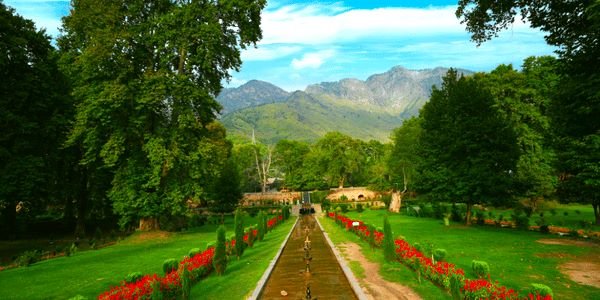
Pahalgam
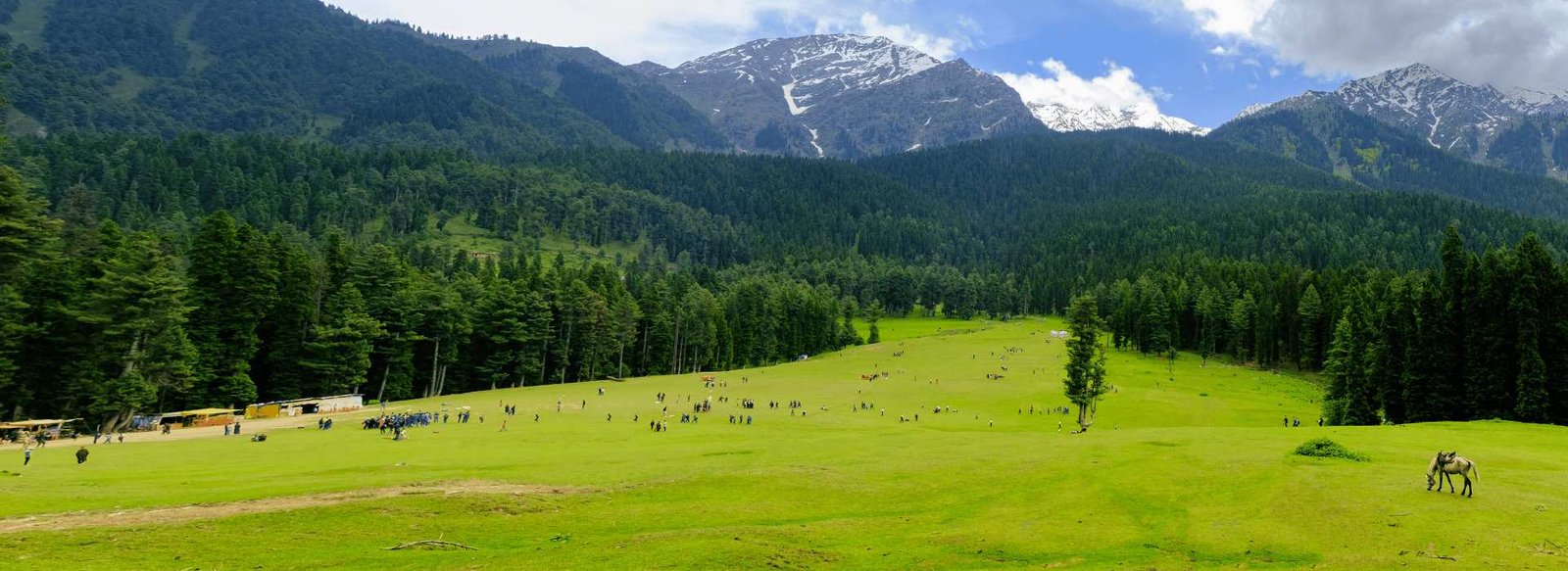
Located 95 km from Srinagar at a height of 7200 ft, Pahalgam, known as the ‘Valley of Shepherds’, is a famous hill station in Jammu and Kashmir where many films have been shot. Standing at the confluence of Lidder river and the Sheshnag lake, Pahalgam is surrounded by thickly wooded pine forests, breathtaking vistas of meadows and the snow-clad Himalayan mountains.
Aru Valley
Aru Valley is one of tourist’s favorite in the area, with lush green grasslands and thick forests, interspersed with modest and playful streams of water and a backdrop of huge silver mountains.
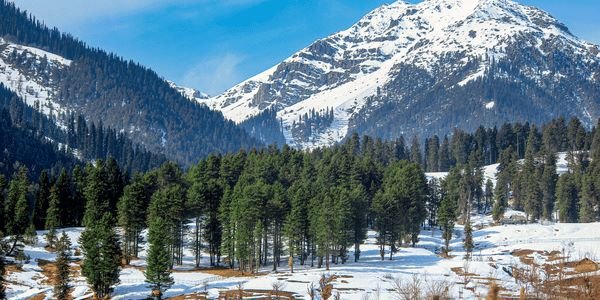
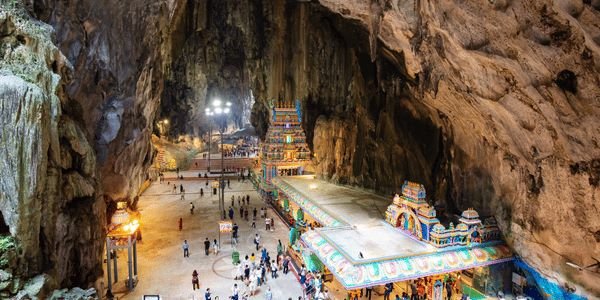
Kondana Caves
Kondana Caves are located in small village named Kondana which is 33 km north of Lonavala and 16 km north west of Karla Caves. This cave group has about 16 Buddhist caves. The caves were excavated in first century BC show wooden pattern prominence. One can reach the cave by descending from Rajmachi village as well. The cave has only one inscription on the front of the Chaitya, which gives information about donors.
Lidder River
Originating from the Kolahoi Glacier, Lidder River is a 73 kilometer long river with its mouth at the Jhelum River. The river flows through lush green mountains of fir, making up for a very scenic walk around its banks. The tourist village of Aru is also situated on its bank. The tourist destination of Pahalgam covers the central Lidder Valley. Hence, the river offers scenic views all along its course.
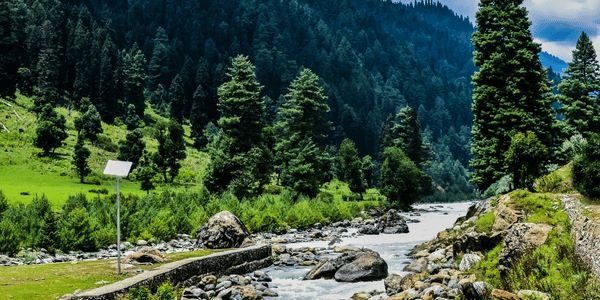
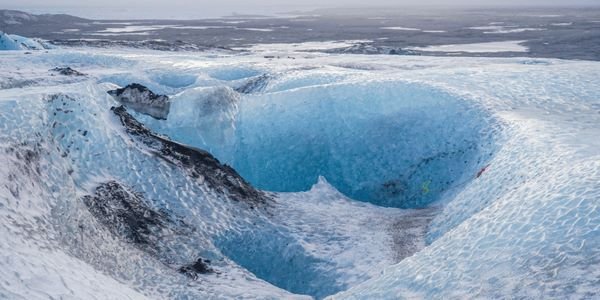
Kolahoi glacier
Situated over the Lidder River, Kolahoi glacier is a hanging glacier known for its breath taking views. While the only way of reaching this glacier is though trekking, one can also hire ponies or horses for some parts of the journey.
Mamaleshwara temple
At a distance of about a kilometer from Pahalgam, is a temple dedicated to Lord Shiva, constructed purely of stone, by the then King Jayasima. The temple is marked as a significant place of worship in the region and draws pilgrims from all over the state.

About Leh, Ladakh
A land like no other with a superabundance of attractions to visit and fabulous landscapes, amazing people and culture, Ladakh is truly a heaven on Earth. Bounded by two of the world’s mightiest mountain ranges, the Great Himalaya and the Karakoram, it lies athwart two other, the Ladakh range and the Zanskar range. Ladakh is mystical in all the spheres it covers, from nature, geography, sceneries to the modest cultures that it fosters. It is said that only in Ladakh can a man sitting in the sun with his feet in the shade suffer from sunstroke and frostbite at the same time.
For those of us living in the constant confusion about the difference between these twin locations, Leh-Ladakh, here is something that might help you. Formerly falling in the state of Jammu & Kashmir, Ladakh was administered a union territory on 31st October 2019. Ladakh is divided into two districts: district Leh, and district Kargil. The former district has a popular town “Leh” and is a great tourist attraction because of its beautiful monasteries, picturesque locations, and interesting markets defining the culture of the place. Ladakh is an adventure playground for climbing, jeeps tours, rafting and high-altitude trekking. Note that Leh Ladakh is inaccessible by road outside the summer months. The road passes close altogether from around October to May, and the only way to reach left is by air.
Things to Do
Nudra Valley
Nubra Valley lies in the union territory of Jammu & Kashmir, at a distance of around 140 Km from Leh. Located on the ancient Silk Route, the valley has Shyok and Nubra river snaking through it and some beautiful monasteries.The region is currently under military supervision because the road further leads to the Siachen base camp, which happens to be the highest battlefield in the world. All foreign nationals need to get protected area permit, and Indian travellers need to obtain an Inner Line Permit to enter the Nubra valley. You need to hand over the photocopies of your travel permits to the soldiers in the Khardung La pass. Most tourists travel to Nubra Valley from Leh through Khardung La.
With arid mountains in the backdrop, Nubra Velly is famous for the Bactrian camel rides. Bactrian camels are of the rarest sort, having two humps and were the primary source of transportation in the silk route. It is also famous for its Hippophae shrub, popularly known as Leh Berry. In Diksit, you can buy some lovely Kashmiri or Tibetan artefacts, Pashmina shawls, woollen socks, almonds, apricots, apples and other things that define Kashmir.
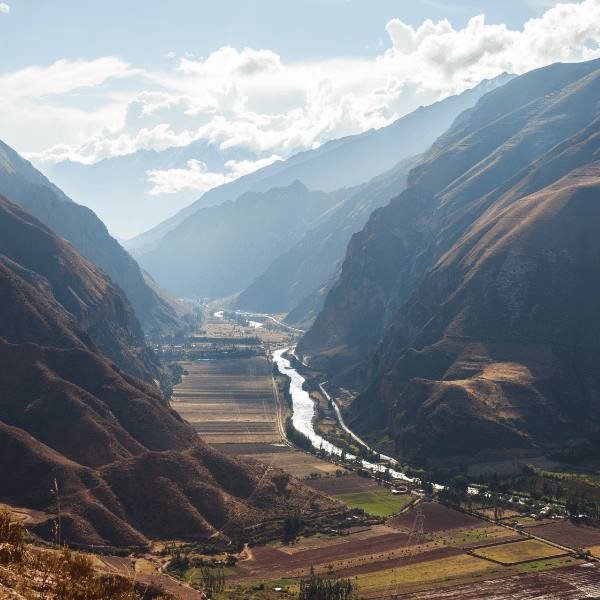
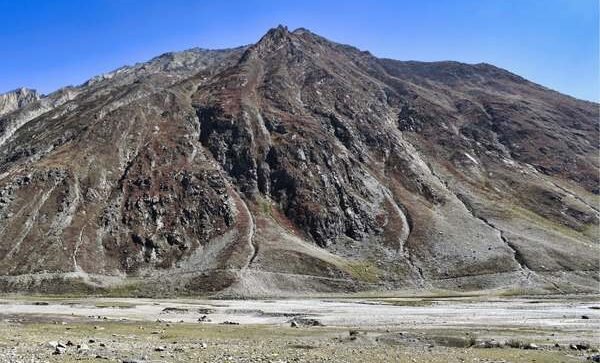
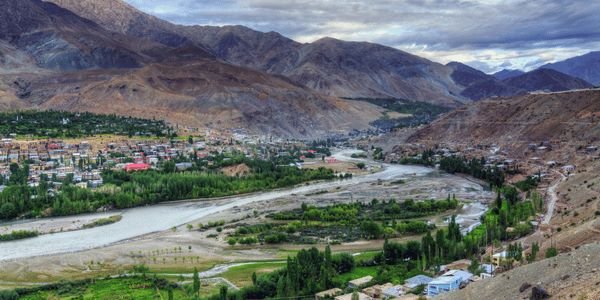
Kargil
Usually a stopover for people travelling towards Leh or Padum, Kargil is a tourist hotspot that’s small enough to be explored by wayfaring. Situated close to the line of control, Kargil is also a volatile region, owing to the terrorism prevalent from the other side of the LOC. However, apart from its glorious past, bestowed with natural beauty and adventure, Kargil is the place to be for intrepid travellers.
It is the home to the famed Nun Kun Peaks and has excellent potential for skiing, mountaineering and trekking. Kargil rests on the banks of River Suru and also offers unique opportunities for river rafting. An amalgamation of Buddhist and Turkish architecture, Kargil has a rich history dating back to the 16th century. It is nestled at an altitude of 2704 metres above sea level and offer exemplary views of the Himalayan Ranges. Apart from tourism, this region is also known as an essential centre for trade and commerce. Dotted with apricot farms, Kargil is one of the largest producers of apricots in India. Sumptuous food and warm locals are the highlights of this town. Hence, sampling the local delicacies is one of the best experiences in Kargil.
Shanti Stupa
The Shanti Stupa in Leh is a magnificent white-domed Buddhist monument located atop a steep hilltop at a dizzying height of 11,841 feet. It is a religious place for the Buddhists as it holds the relics of Buddha, consecrated by the 14th Dalai Lama. It is also popular amongst tourists as it offers a sweeping view of Leh and the nearby Changspa village. Shanti Stupa looks exceptionally beautiful during the full moon night when it is naturally illuminated by the moonlight.
Shanti Stupa was constructed in 1991 by Japanese Buddhist, Bhikshu Gyomyo Nakamura. The construction was jointly done by the Japanese and Ladakhi Buddhists to mark the completion of 2500 years of Buddhism and to promote world peace. It is a part of the peace pagoda mission, which aims to spread peace through the preaching of Buddha. Shanti Stupa is a perfect getaway for both- those looking to obtain peace from offering prayers to God and those waiting to be mesmerised by nature’s wondrous beauty.
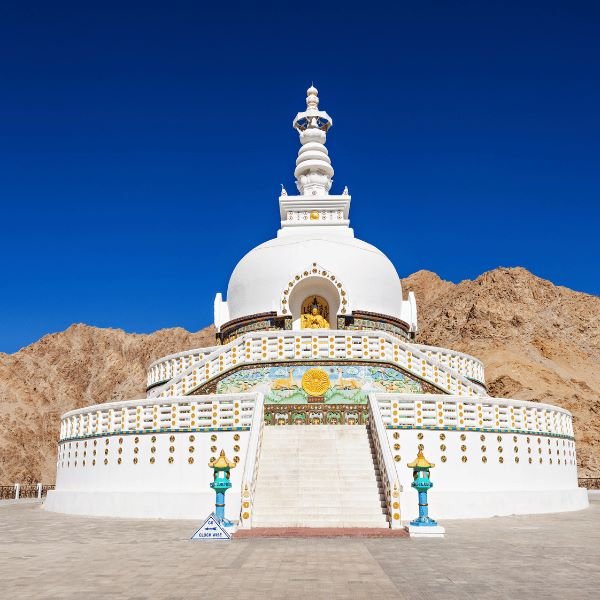
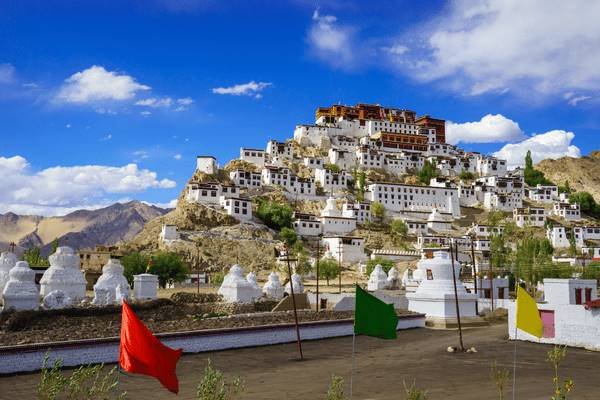
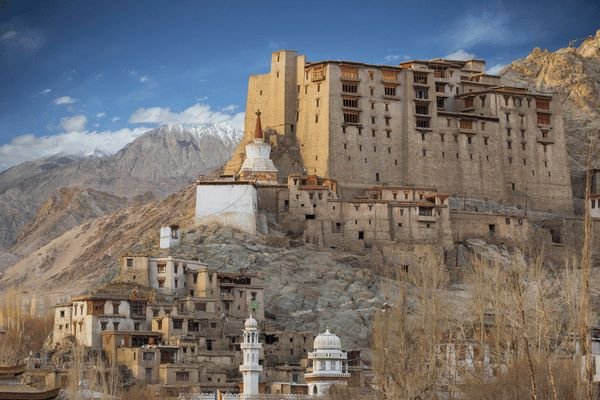
The Leh Palace
The Leh Palace, also known as ‘Lhachen Palkhar,’ is a 17th-century former royal palace and one of the central attractions in Leh. Built under the patronage of by King Sengge Namgyal, it used to house his family. The nine-storey dun-coloured palace now houses a museum and a prayer room, while the highlight is the sweeping view of Leh and the surrounding Zanskar mountain from the rooftop.
The Leh Palace is modelled on the Potala Palace in Lhasa (Tibet), and even though a considerable part is now in ruins due to the Kashmiri invasion that took place in the 19th century, the stately palace continues to remain a stunning place to explore. The beauty of the Leh Palace still stands in pride with a lot of ancient Buddha relics, paintings, old utensils, cutlery used by the royal family and artefacts adorning the walls, most of which are almost 450 years old.
The palace looks even more stunning when it is lighted upon certain special occasions, such as Galdam Namchot festival when locals gather around the palace to celebrate the local festival. The majestic palace is presently under the Archaeological Survey of India, which is working on renovating the ancient structures of that era and striving to keep intact the history of the Namgyal dynasty in Leh.
The Leh Palace
The Leh Palace, also known as ‘Lhachen Palkhar,’ is a 17th-century former royal palace and one of the central attractions in Leh. Built under the patronage of by King Sengge Namgyal, it used to house his family. The nine-storey dun-coloured palace now houses a museum and a prayer room, while the highlight is the sweeping view of Leh and the surrounding Zanskar mountain from the rooftop.
The Leh Palace is modelled on the Potala Palace in Lhasa (Tibet), and even though a considerable part is now in ruins due to the Kashmiri invasion that took place in the 19th century, the stately palace continues to remain a stunning place to explore. The beauty of the Leh Palace still stands in pride with a lot of ancient Buddha relics, paintings, old utensils, cutlery used by the royal family and artefacts adorning the walls, most of which are almost 450 years old.
The palace looks even more stunning when it is lighted upon certain special occasions, such as Galdam Namchot festival when locals gather around the palace to celebrate the local festival. The majestic palace is presently under the Archaeological Survey of India, which is working on renovating the ancient structures of that era and striving to keep intact the history of the Namgyal dynasty in Leh.


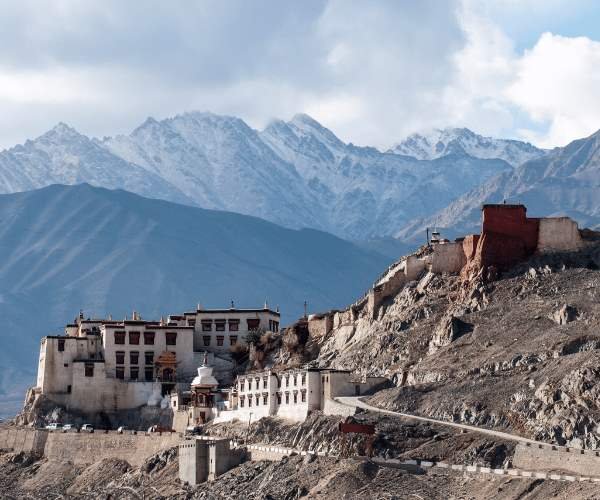
Spituk Monastery
Spituk Monastery also called Spituk Gompa, is a Buddhist monastery located about 8 kms from Leh. One of the most dazzling monasteries in India, it houses 100 monks and a giant statue of Kali, which is unveiled during the annual Gustor Festival held every year. It is famous for its collection of Buddhist objects of antique arms, icon, ancient masks and numerous Thangka paintings.
Known as Pethup Gompa among the locals, the Spituk Monastery was founded by Od-de, the elder brother of Lha Lama Changchub Od when he came to Maryul in the 11th Century. The site was blessed by the Arhat Nyimagung. When Lotsewa Rinchen Zangpo (Translator) came to that place he said that an exemplary religious community would arise there and so the monastery was called Spituk. Spituk Monastery, with its commanding view of the Indus Valley and the surrounding beauty, is often visited by tourists from all across the globe.
The Phugtal (Phuktal) Monastery
The Phugtal (Phuktal) Monastery is a Buddhist monastery situated in the south-east part of Zanskar region in Ladakh. Situated at the mouth of natural cave on a cliff, it is one of the most isolated monasteries in the region, built around 2500 years ago. The Phugtal Monastery looks like a honeycomb from a distance.
Phuk means “cave”, and tal means “at leisure” in Zanskari dialect. The monastery can only be reached by foot and requires arduous trekking. Trekking lovers would find this as a great getaway full of enchanting sights and sounds. The Phuktal Monastic School is located nearby, delivering free education to the children. What is unique about Phugtal Monastery is that the degree of water flowing through the cave remains the same in spite of the pace of water outside. It has 4 prayer rooms, library, kitchen, guest rooms, and living space for around 700 monks
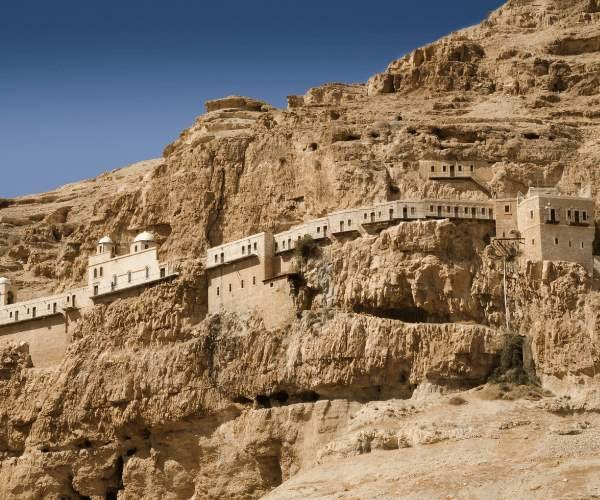
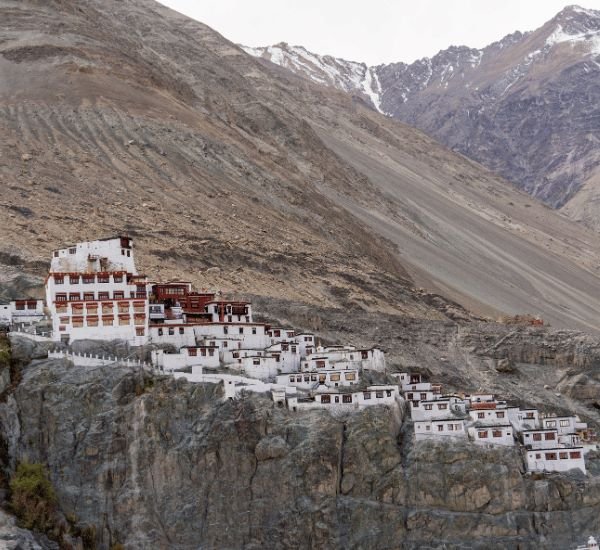
Diskit Monastery
Also known as Deskit/ Diskit Gompa, the Diskit Monastery is the oldest and largest monastery in Nubra valley. It holds a strong bond with the Tibetan myth. This holy site is believed to have been the very residence of an anti-Buddhist Mongolian demon. Although this evil being was killed several times close to the monastery, it always came back alive. It is said that Diskit Monastery houses the disintegrated head and hand of this demon.
This monastery also houses a school which is run in collaboration with an NGO named “The Tibet support group”. The school provides computer facilities and also teaches the Tibetan kids science in the English language. Diskit Monastery is renowned for its festival “Dosmoche”, translating into the festival of the Scapegoat. Masked monk performances expressing the power of good over evil is a typical sight during this celebration. It is said that this dance form eradicates bad luck.
Stok Palace
Located around 15km from Leh, the Stok Palace is the summer home to the royal family of Ladakh and descendants of King Sengge Namgyal. It was established in 1820 by King Tsepal Namgyal and was opened to the public in 1980 by the Dalai Lama. The Stok Palace has been converted into a heritage hotel and houses the Stok Palace Museum and Temple. The rustic interiors of the hotel emit royal antique decor alongside some quirkily decorated rooms as well. Besides, the Stok Palace is a well-preserved traditional piece of the Buddhist culture too. The hotel is divided into six units within the Stok Palace and three more divisions in the Chulli Bagh Villa.
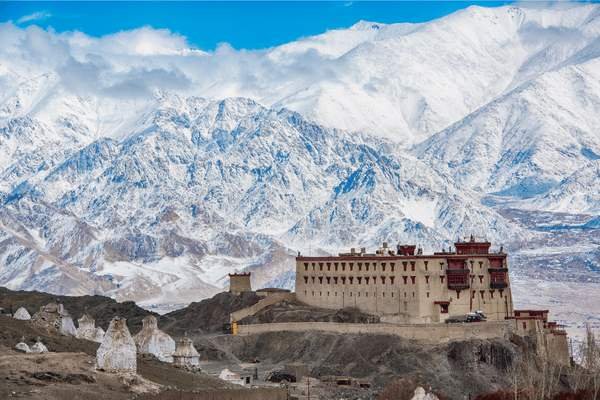

Tso Kar
Tso Kar is a fluctuating salt lake located in the Rupshu Plateau of scenic Ladakh Valley. It is popularly known as the White Lake owing to the white salt deposits it leaves on the shores. Tso Kar Lake is the most peaceful and calm of the three high-altitude lakes (Pangong Lake and Tso Moriri) and also the smallest of the three.
Tso Kar hosts varied flora and fauna attracting a horde of bird watchers, especially during the migration season. The common birds found here are Brahmin ducks, bar-headed geese and great crested grebe. The main attraction, however, is the black-necked crane. The black-necked cranes, known for their fidelity, come to Tso Kar to lay eggs. There are only a few yak sheds, a monastery and a couple of nomadic families in the surrounding. The view of the lake at night in the moonlight is even more stunning.
About Himachal Pradesh
Himachal Pradesh is an Indian state located in the northern part of the country. Endowed with lofty Himalayan mountains, ancient religious sites and a cheerful culture, Himachal Pradesh is home to famous tourist destinations like Kullu, Manali, Dharamshala and Shimla. Himachal Pradesh is also known as the state of apples all over India. McLeod Ganj, the abode of the 14th Dalai Lama is worth visiting. Himachal Pradesh also has plenty of forts, palaces, and monasteries that are of utmost cultural and historical importance. Himachal Pradesh is located in the north of India bordering Jammu & Kashmir, Uttarakhand, Uttaranchal and Punjab and a boundary with Tibet.
Shimla

A wonderful abode in the Himalayas, the city of Shimla is surrounded by scenic pine-covered hills and snow-capped peaks. Located in the magnificent hill state of Himachal Pradesh in India, it is one of the most popular tourist destinations in the country. From honeymooners to adventure seekers, the city serves as a charming retreat to a large number of people. The enchanting beauty of this hill station has attracted countless filmmakers and cinematographers. This erstwhile summer capital of the British, still retains its colonial-era charm through its spectacular historical churches and institutes, like Christ Church, Indian Institute of Advanced Study and many more.
The Ridge
This is the most popular point in Shimla. Located on the Mall road, at the heart of Shimla, this is a much loved and enjoyed stretch here, where visitors come and soak themselves in the views of surrounding areas.
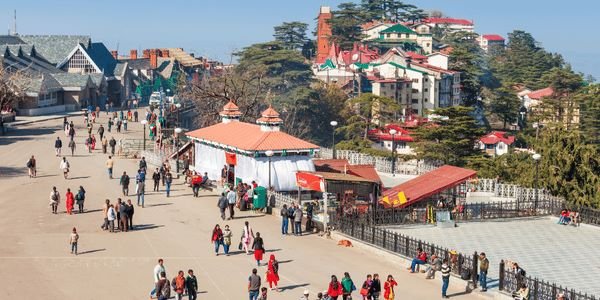

Kufri
While in Shimla, visit its colder, higher and less crowded cousin, Kufri just 13 km away from the main town. The views and sceneries here only get better, and the landscapes more flattering, a bit untouched with the tourist rush.
Kalka Shimla Toy Train
While in Shimla, visit its colder, higher and less crowded cousin, Kufri just 13 km away from the main town. The views and sceneries here only get better, and the landscapes more flattering, a bit untouched with the tourist rush.
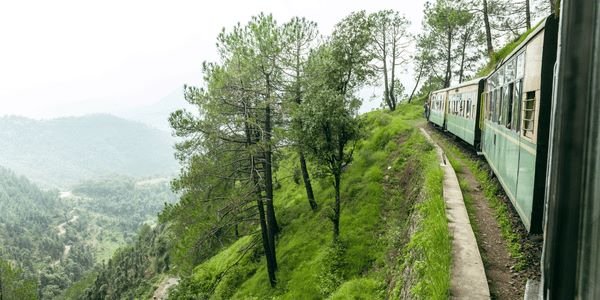
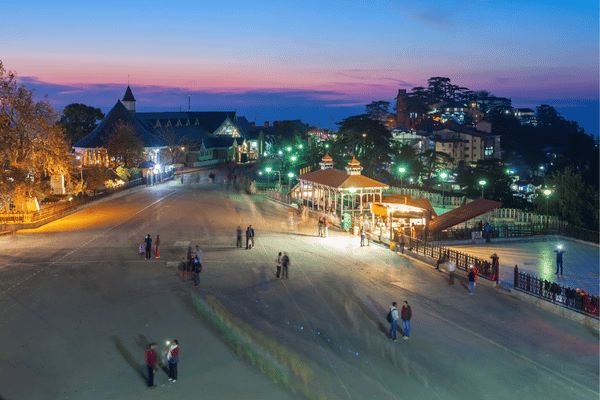
Mall Road
The Mall Road in Shimla, located in the heart of the town, is the main street that is lined up with a myriad of restaurants, clubs, banks, shops, post offices and tourist offices. At the same time, the place boasts of the other exciting attractions that it houses, such as the Scandal Point and Kali Bari Temple. One of the busiest and more commercial areas of Shimla till date, this stretch is a mini-world in itself. The Shimla Mall Road is the one stretch, that truly celebrates the spirit of the hilltown, its tourist rush and valleys and hills covered with houses and hotels. The charm and beauty of the Mall Road can be enjoyed by groups of friends, families and honeymooners.
Shimla Christ Church
The Mall Road in Shimla, located in the heart of the town, is the main street that is lined up with a myriad of restaurants, clubs, banks, shops, post offices and tourist offices. At the same time, the place boasts of the other exciting attractions that it houses, such as the Scandal Point and Kali Bari Temple. One of the busiest and more commercial areas of Shimla till date, this stretch is a mini-world in itself. The Shimla Mall Road is the one stretch, that truly celebrates the spirit of the hilltown, its tourist rush and valleys and hills covered with houses and hotels. The charm and beauty of the Mall Road can be enjoyed by groups of friends, families and honeymooners.
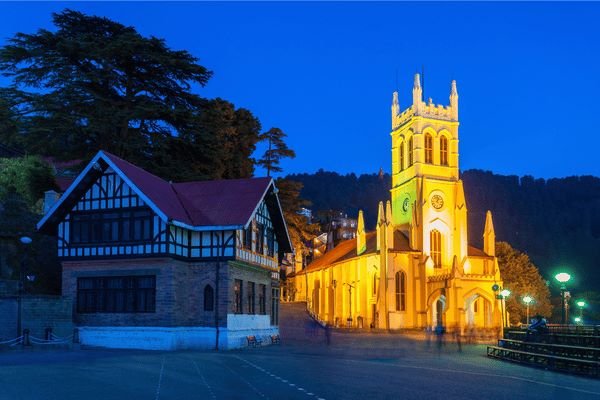
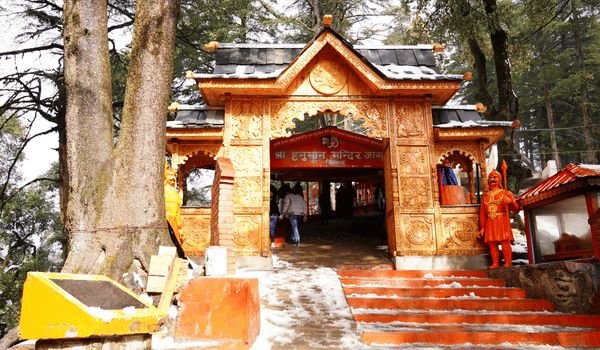
Jakhu Temple
Set amidst the lush green background of the Shivalik hill ranges on Jakhu Hill, the highest point in Shimla, the Jakhu Temple is an ancient site shrouded in legends and offers a mystical vibe to visitors. The Jakhu Temple is dedicated to the Hindu monkey god – Hanuman. The site is one of the most sought-after tourist attractions in Shimla, attracting tourists and visitors of all ages and religions apart from Hindu pilgrims and devotees. Jakhu Temple has the world’s largest Hanuman statue, which is visible from most parts of Shimla.
Kullu
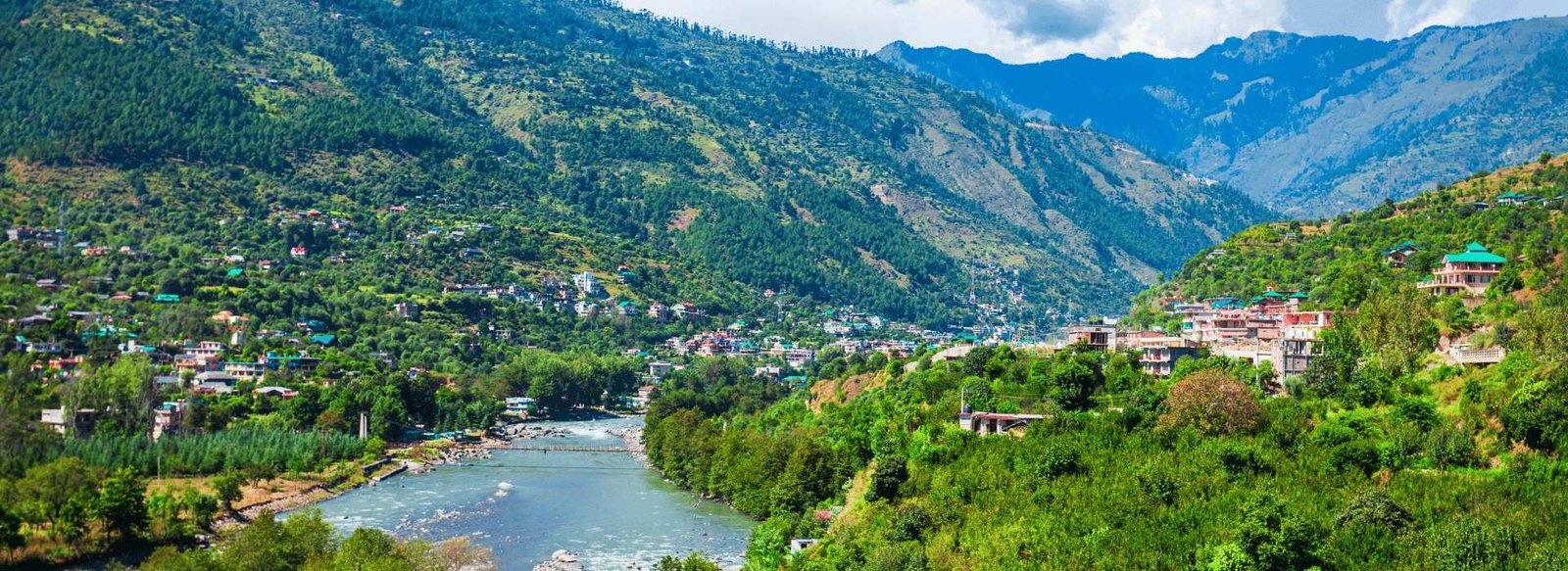
Kullu, a popular tourist destination in Himachal Pradesh located on the banks of Beas river. With panoramic views and majestic hills covered with Deodar and Pine trees, it is a nature lover’s paradise. Kullu generally coupled with its sister town Manali which is on much higher altitude and provides more scenic views.
Ragunath Temple
Located in the scintillating hill town of Kullu, the Raghunath Temple is one of the main attractions here. Wrapped around in an ancient legend, the temple finds connections to Lord Rama, and the idol of Lord Raghunath placed here, is said to be the same as the one used by him. While it derives much significance from the legend, the Raghunath Temple borrows its design and architecture from the Pahari and Pyramidal styles. Other than the spirituality surrounding the temple, the sceneries and views about it too are equally alluring.
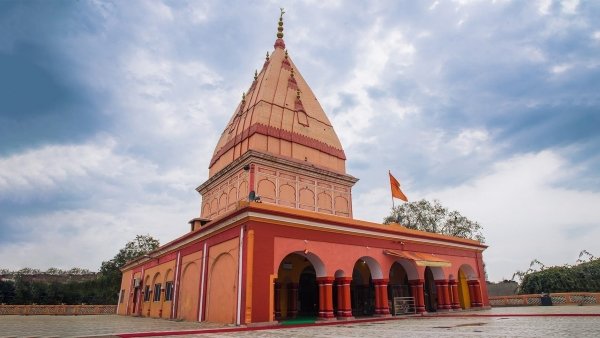
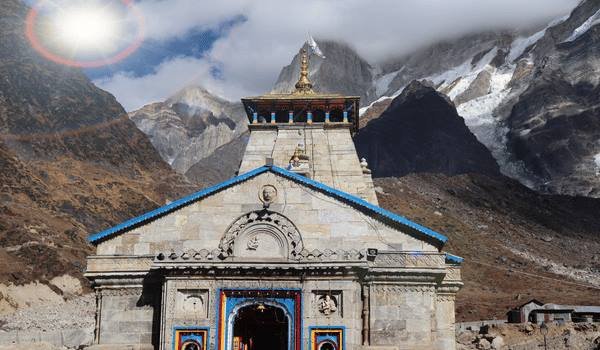
Bijli Mahadev Temple
Located at an altitude of 2460 m at a hilltop in Kullu, Himachal Pradesh, across the Beas River, Bijli Mahadev Temple is one of the ancient and sacred temples in India. As the name suggests, it is dedicated to Lord Shiva and is very popular for trekking. It is said that the Bijli Mahadev Temple houses a Shiva Linga which was broken into pieces by lightning, that was brought back together and bounded by a temple priest using butter. The word around is that this repeats itself every year.
Pandoh Dam
Pandoh Dam is an embankment Dam that lies in the Mandi district of Himachal Pradesh. Constructed on Beas River, the primary purpose of Pandoh Dam is hydroelectric power generation. It was commissioned in 1977 and is located at a distance of 10 km from Manali. The man-made lake created by the dam draws a good number of people towards it. Vacationers travelling to Manali get a perfect location near the dam to click great pictures as the location is highly picturesque and full of lush greenery. If you want to see the view of the water flowing, you need to reach there at the right time. The sight of water being released is fantastic and is a treat for your eyes. Also, you can lay your eyes upon the lovely water birds into the greenish blue waters of the dam. Rafting is another favourite activity here, usually done in the lower bed.
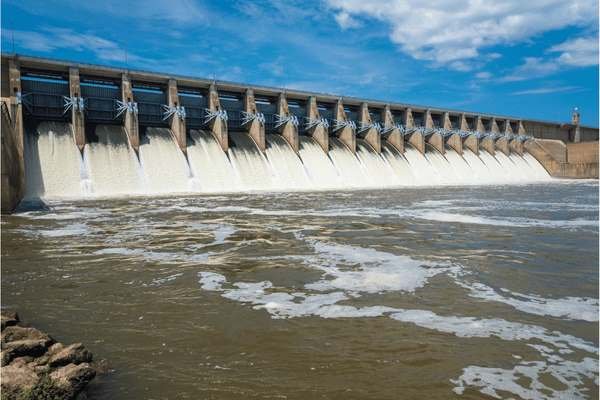
Manali
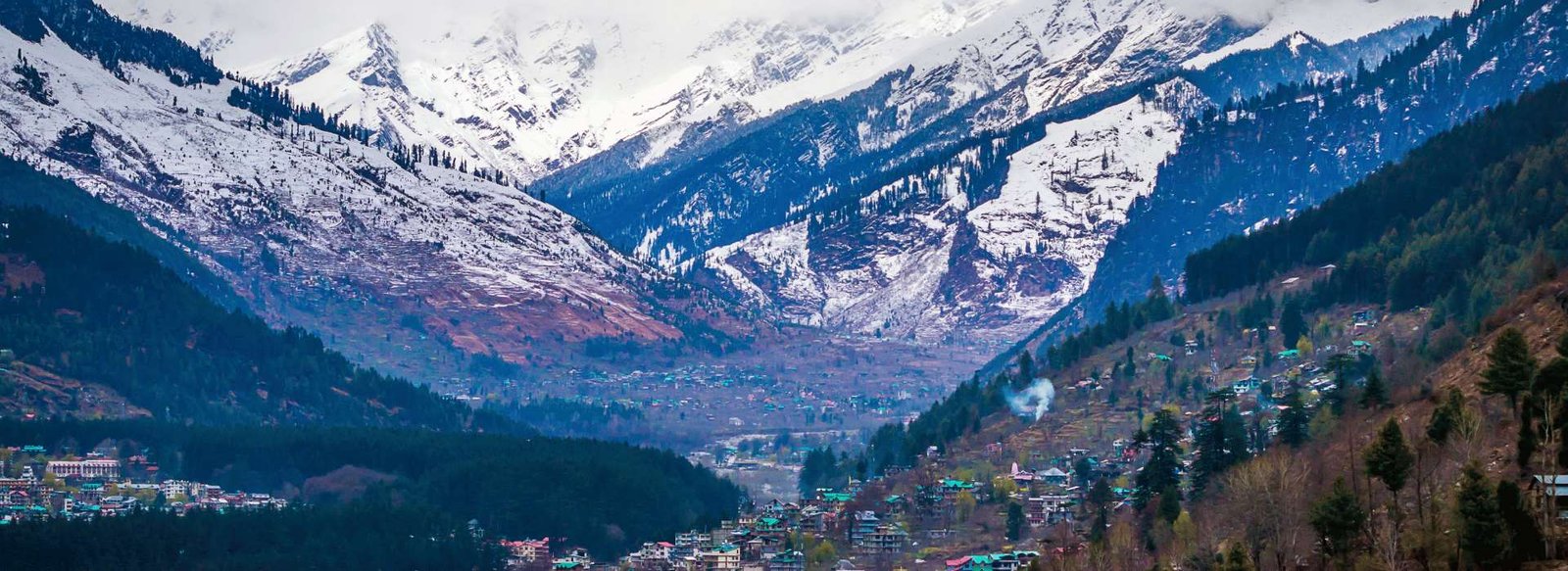
Nestled in between the snow-capped slopes of the Pir Panjal and the Dhauladhar ranges, Manali is one of the most popular hill stations in the country. With jaw-dropping views, lush green forests, sprawling meadows carpeted with flowers, gushing blue streams, a perpetual fairy-tale like mist lingering in the air, and a persistent fragrance of pines – Manali has been blessed with extraordinary scenic beauty. From museums to temples, from quaint little hippie villages to bustling upscale streets, river adventures to trekking trails, Manali has every reason to be the tourist magnet it is, all year round.
Solang Valley
When heading to Manali for a vacation, two absolutely essential destinations in the itinerary are Rohtang and Solang Valley. 14 kilometres to the north west of the main town of Manali, Solang Valley is one of the most popular tourist destinations in Himachal Pradesh. Situated on the way to Rohtang from Manali, every year the valley welcomes tourists in huge numbers. A favourite for adventure enthusiasts, parachuting to paragliding, horse riding to driving mini-open jeeps.
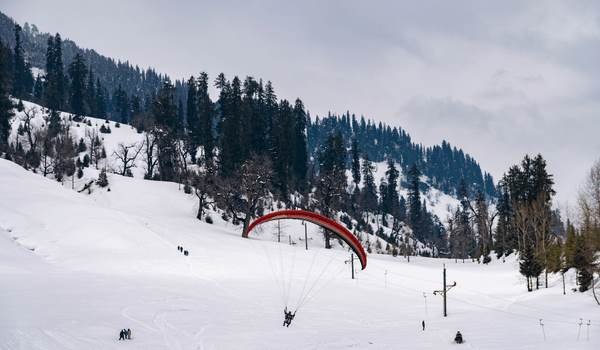
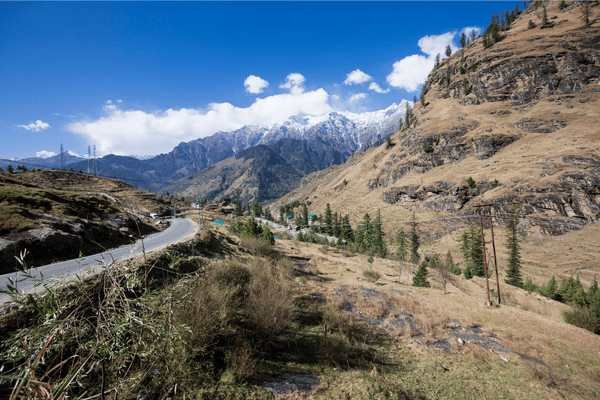
Rohtang Pass
Located at a distance of just 51 kilometres from Manali, Rohtang Pass can be reached only by road. The pass is located at a massive height of 3978 metres on Manali- Keylong road. When planning a trip to Manali, a day off to the vista point of Rohtang Pass is the ultimate and almost essential attraction of the itinerary. Owing to its splendid natural beauty, Rohtang Pass is a favourite among the community of film directors. Many blockbusters ranging from ‘Jab We Met’ to ‘Yeh Jawani Hai Deewani’ have been shot here. A peculiar fact behind the name of the place is that it was named so because a number of people working in CBRE died whilst trying to cross this treacherous stretch.
Paragliding
Paragliding is an adventure sport that offers a unique vantage point among the clouds. A favourite among adrenaline junkies, this sport involves launching a glider aircraft and being suspended under a fabric wing. Medium flights involve a 15-minute flight, while long/high flights last between 40 minutes and 1 hour. Individuals with a paragliding license can opt for solo flights while amateurs are allowed to take tandem flights – where a pilot accompanies the individual and navigates the glider.
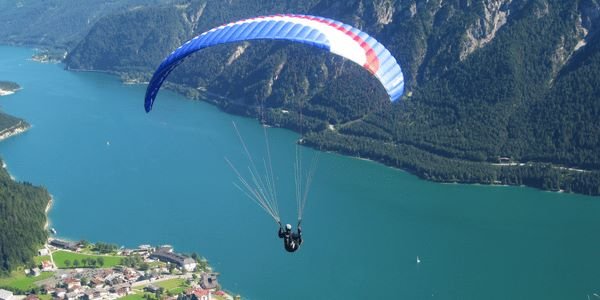
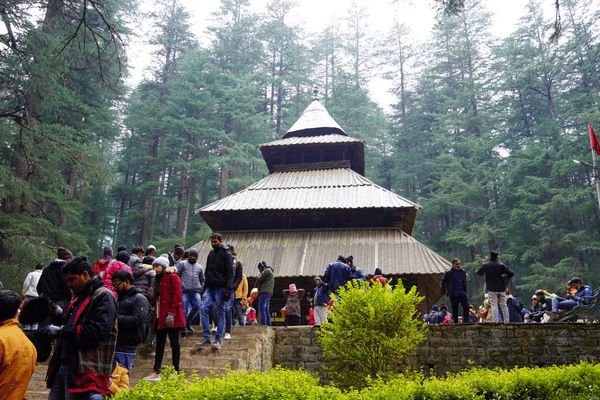
Hadimba Temple
Located amidst the snow-covered hills of Manali, the Hadimba Temple is a unique shrine dedicated to Hidimba Devi, who was the wife of Bhima and mother of Ghatothkach. Surrounded by gorgeous cedar forests, this beautiful shrine is built on a rock which is believed to be in the image of goddess Hidimba herself. Locally known as Dhungari Temple, the construction style of the Hidimba Devi temple is entirely different from that of any of the other temples, with its wooden doorways, walls, and cone-shaped roof. This temple is a fitting dedication to its presiding deity Hadimba.
Hadimba Temple
Located amidst the snow-covered hills of Manali, the Hadimba Temple is a unique shrine dedicated to Hidimba Devi, who was the wife of Bhima and mother of Ghatothkach. Surrounded by gorgeous cedar forests, this beautiful shrine is built on a rock which is believed to be in the image of goddess Hidimba herself. Locally known as Dhungari Temple, the construction style of the Hidimba Devi temple is entirely different from that of any of the other temples, with its wooden doorways, walls, and cone-shaped roof. This temple is a fitting dedication to its presiding deity Hadimba.

Dharamshala

Dharamshala or Dharamsala city is located in Kangra district at a distance of 18 km from Kangra city. Dharamsala is separated as upper and lower divisions with different altitudes. The lower division is the Dharamsala town itself. whereas, the upper-division is located 3km away and popularly known as Mcleodganj. Dharamsala is prominently visited for the bus connections and the bustling market.
Dharamsala is the home to Dalai Lama, the Buddhist leader who runs his government in exile from Dharamsala. Now, what better place on earth than this little town set on the foothills of Dhauladhar ranges to experience the rich and regal Tibetan culture. In the year 1959, Dalai Lama came to India with his followers and settled, rather beautified the town of Dharamsala, transforming it into the little Lhasa. Dharamsala, for many years, has been a centre of meditation and peace, with thousands of people from around the world coming here to seek Nirvana.
The Library of Tibetan Works and Archives
The Library of Tibetan Works and Archives is a Tibetan library in Dharamshala, Himachal Pradesh, founded by Tenzin Gyatso, the 14th Dalai Lama. With artefacts and manuscripts that date back to the 12th century, it is one of the pioneering institutions in the study and research of Buddhism. With an air of peace and serenity descending upon people who visit this offbeat museum, dissemination of Tibetan knowledge has been made possible. It is home to as many as 80,000 manuscripts and 600 Buddhist artefacts including the beautifully crafted silk applique thangkas and a three dimensional, wood carved mandala of the Avalokiteshwara – one of the most revered and compassionate Bodhisattvas in Buddhism.
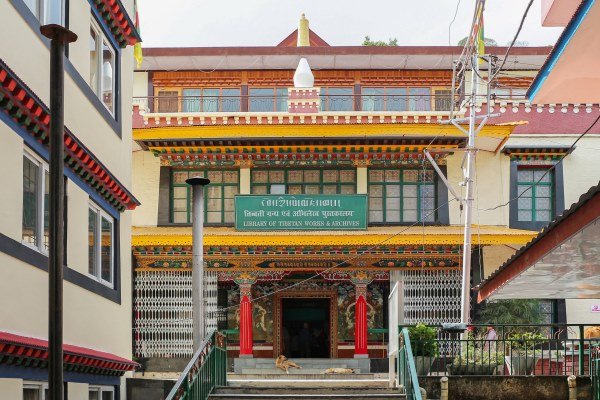
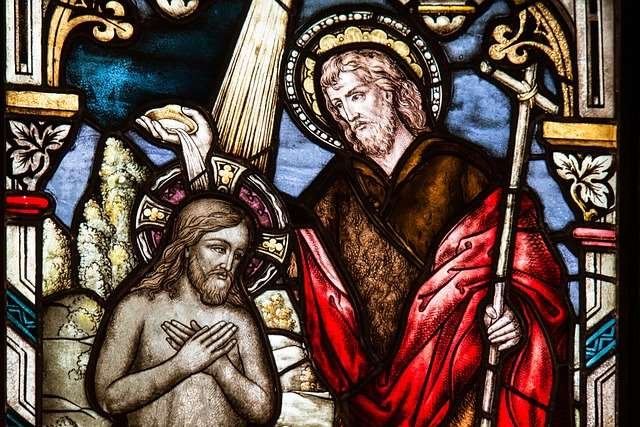
John in the Wilderness
St. John in the Wilderness, built in 1852, is one of the most important churches in Himachal Pradesh. Located near Dharamshala and on the way to Mcleodganj, this neo-gothic church was built in dedication to John the Baptist. Set amidst lush deodar forests, this peaceful edifice is known for its Belgian stained-glass windows. The eccentric church was built in dense woods which is why it is famous as ‘St John in the Wilderness’. One of the oldest built structure of Dharamsala, this is also the final resting place of Lord Ergin, one of the governor generals and also viceroy of India during the British Raj.
The War Memorial
The War Memorial in the forests of Dharamshala was created to commemorate the memory of those who fought to save our motherland. During the Indo-China War of 1947-48, 1962, 1965, and 1971, and UN Peace Operations, many brave soldiers of Kangra lost their lives as war heroes. Three huge panels of black stone, each 24 feet in height, preserve their memory in stone. The War Memorial is surrounded by the poetic pine forests of Dharamshala, leading to lush gardens through a quaint walkway. Look out for the names of the martyred soldiers etched on the stone panels. You can have some refreshments from the nearby cafe serving snacks, and visit the GPC college which is situated close by.
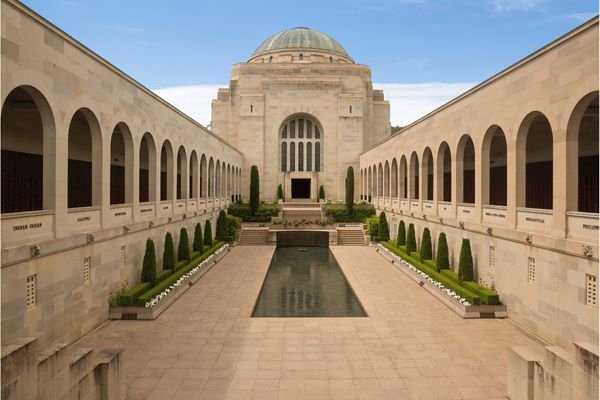
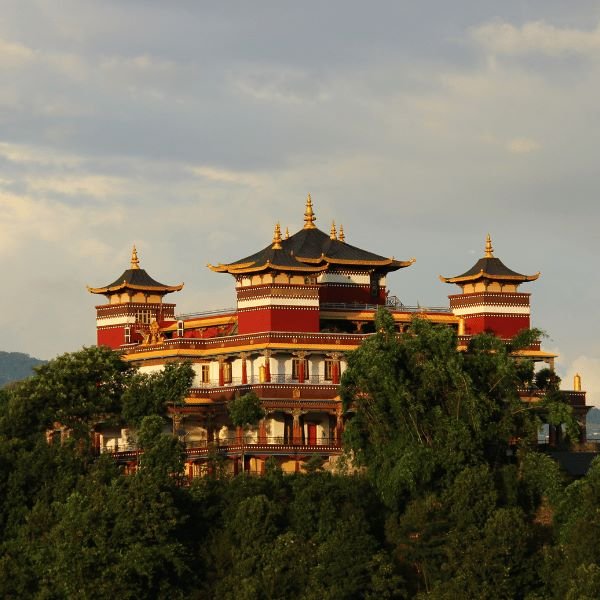
Gyuto Monastery
Popularly known for the study of Tantric Meditation and Philosophy, the Gyuto Monastery is one of the beautiful and popular monasteries located in Dharamshala. It was founded in India in 1959 and was established for preserving and promoting the tradition of Black Magic, popularly known as Tantric Teachings, of the great teacher Ksongkhapa. The glorious monastery has helped in depicting how, unlike popular belief, black magic can be used for the well-being of the people.
The Gyuto Monastery is beautifully constructed on a hilltop with a commanding view of the Dhauladhar Ranges and the Beas River from there. A beautiful gold-plated statue of Lord Buddha is situated on the premises of the temple which glistens when the rays of the sun fall on it early morning. Plenty of tourists and Buddhists come to the resplendent Gyuto Monastery to witness the quiet and serene monastery, which is one of the delights of Dharamshala.
McLeodganj

Mcleodganj is a hill station near Dharamshala, popular among trekkers. Located in Kangra district, Mcleodganj’s culture is a beautiful blend of Tibetan with some British influence.
Also known as Little Lhasa and famous around the world for being home to the Tibetan spiritual leader Dalai Lama, Mcleod Ganj is a beautiful town situated near upper Dharamsala. Nestled amidst majestic hills and lush greenery, this town has one of the most mesmerising landscapes in the entire state of Himachal Pradesh and attracts a lot of tourists throughout the year. The towns of Dharamsala, Mcleodganj, Bhagsu Nag and Kangra are situated very close to each other and tourists must cover all these destinations while travelling here. Few of the most eminent and religiously significant monasteries in India are located here, including the Namgyal Monastery and Tsuglagkhang, where the spiritual leader Dalai Lama resides. Tourists must also visit the scenic Dal Lake and trek to Triund, which are apt for a quiet picnic.
The Bhagsu Waterfall
The Bhagsu Waterfall is perhaps the most famous tourist spot in Dharamshala and attracts tourists who wish to revel in the glories of nature and spend some quiet moments in peace and serenity. The Bhagsunag Waterfall is located on the main road which connects Mcleodganj and Dharamshala and is an ideal location for picnicking with family and loved ones. The waterfall starts at the base of the Dhauladhar Valley, which is also considered to be a religious spot. Before cascading down, the stream also passes through the famous Bhagsunath Temple. The Bhagsu Fall reaches the peak of its glory and majesty during the monsoon season when the water falls from a height of around 30 feet and looks captivating and breathtakingly beautiful. The cafes and coffee houses nearby serve lip-smacking food and light refreshments, and tourists especially love to sit down and enjoy a cup of coffee, while viewing the gorgeous Bhagsunag Waterfall. Bathing in the waterfall is also possible, but the water is freezing at times for the normal human body to handle.

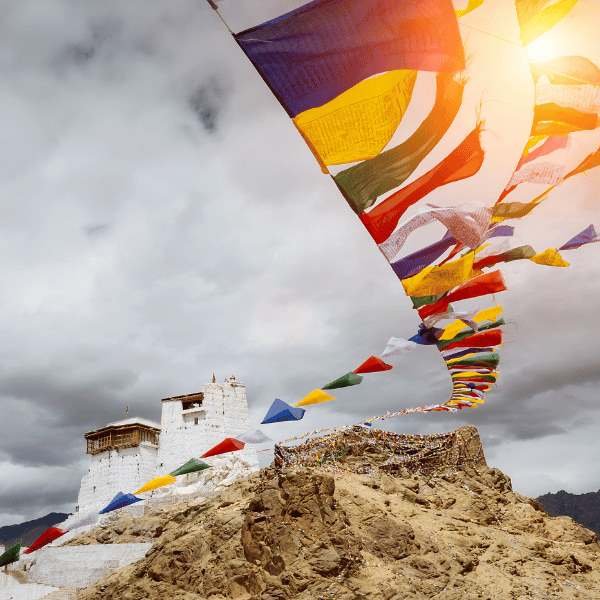
Namgyal Monastery
Dalai Lama, the Tibetan spiritual leader, is believed to have his abode at Namgyal Monastery in Mcleodganj, which is also the largest Tibetan temple outside Tibet. The serenity and ambience that this place creates in the minds of its visitors are enough to attract even those who are not inclined towards this religion. The Namgyal Monastery is often referred to as “Dalai Lama’s Temple” as it is the personal monastery of the 14th Dalai Lama. The foundation of Namgyal Monastery was laid down in the 16th century by the second Dalai Lama and was set up for the monks to help Dalai Lama in religious affairs. The monks residing here in the monastery carry out practices for the well-being of Tibet and work as a centre of learning and meditation on the Buddhist philosophical exposition. Also known as Namgyal Tantric College, it currently houses 200 monks who work towards protecting the practices, skills, and traditions of the monastery. The study of the languages Tibetan and English, texts of Sutra and Tantra, Buddhist philosophy, sand mandalas, ritual chanting, and dances are all included in the study of Buddhism.
Dalai Lama Temple
Just above the town of Dharamshala, in Mcleodganj, is Tsuglagkhang, the place where the Dalai Lama resides. It is one of the most significant places of worship which attracts devotees from all over the world and serves tourists as well. This complex houses Dalai Lama’s residence, Tsuglagkhang Temple, Namgyal Monastery and Tibet Museum. Except for Dalai Lama’s residence, every other part of the complex is open for tourists. If lucky, one can even get to meet His Holiness. The Tsuglagkhang Complex houses a beautiful statue of Lord Buddha as well as statues of Chenrezig and Guru Rinpoche.
The museum inside Tsuglagkhang tends to be a popular choice amongst the tourists and houses many imprints of Tibetan art and culture. These include historical documents, pottery, handicrafts, paintings, etc. The museum gives tourists an insight into Tibetan culture and at the same time, the various struggles faced by them lately. The structure of the Tibet Museum is influenced by Tibetan architecture which is unique and innovative.
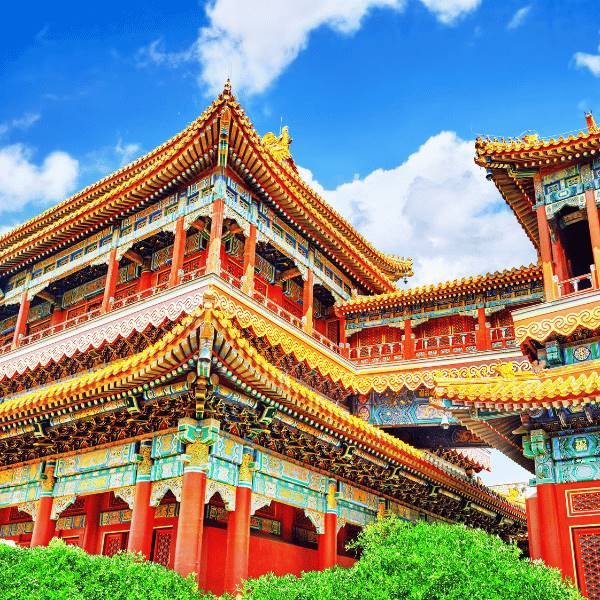

Trekking
Trekking is a hobby for most of us and Himachal Pradesh is a famous and a favourite spot for many trekkers. One can trek from Mclepdganj to Triund, which is a very short and modest trek. Triund also has a number of trekking options with a backdrop of some breathtaking sceneries. Camping in the mountains has the power to break the monotony of daily routine boring lives. The experience of hiking in the natural, pollution-free air and open green landscapes is truly exhilarating. McLeodganj (also known as Little Lhasa) is a suburb of Dharamshala in Kangra District of Himachal Pradesh, India. There are many heavenly places or sites to visit and experience around McLeodganj that will leave you speechless.
Bhagsunag Temple
Surrounded by lovely pools and lush greenery, the Bhagsunag Temple is one of the oldest ancient temples located about 3 kilometres from Mcleodganj. Also popularly known as Bhagsunath Temple, it is highly revered by the local Gorkha and Hindu community. The two pools around the temple are believed to be sacred and are considered to contain miraculous powers of healing. The grand temple is also surrounded by major tourist attractions, such as the Dal Lake and the Kotwali Bazaar. In fact, the Bhagsunath Temple is situated on the way to the famous Bhagsu Waterfalls, and thus tourists make it a point to stop by at the temple and seek the blessings of the Almighty before they proceed further on their journey.
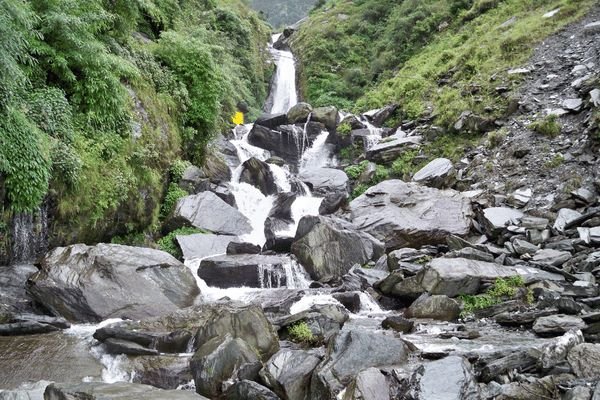
Dalhousie

Mcleodganj is a hill station near Dharamshala, popular among trekkers. Located in Kangra district, Mcleodganj’s culture is a beautiful blend of Tibetan with some British influence.
Also known as Little Lhasa and famous around the world for being home to the Tibetan spiritual leader Dalai Lama, Mcleod Ganj is a beautiful town situated near upper Dharamsala. Nestled amidst majestic hills and lush greenery, this town has one of the most mesmerising landscapes in the entire state of Himachal Pradesh and attracts a lot of tourists throughout the year. The towns of Dharamsala, Mcleodganj, Bhagsu Nag and Kangra are situated very close to each other and tourists must cover all these destinations while travelling here. Few of the most eminent and religiously significant monasteries in India are located here, including the Namgyal Monastery and Tsuglagkhang, where the spiritual leader Dalai Lama resides. Tourists must also visit the scenic Dal Lake and trek to Triund, which are apt for a quiet picnic.
Khajjiar
This small town, very nearby to Dalhousie is also known as the ‘Mini Switzerland’ or the ‘Switzerland of India’. The mesmerizing beauty of this place has greatly influenced and inspired many kingdoms throughout the years, including the Rajputs and Mughals. Located at an altitude of 6,500 feet, the natural beauty and picturesque landscape of this place are bound to leave an everlasting impression on a tourist. Khajjiar is known for its nine-hole golf-course which is nestled in the midst of lush greenery and a breathtaking landscape. Khajjiar is a plateau with a small lake which tends to be a favorite amongst tourists. This region also attracts adventure seekers and has a lot of options in adventure sports like zorbing, trekking etc.
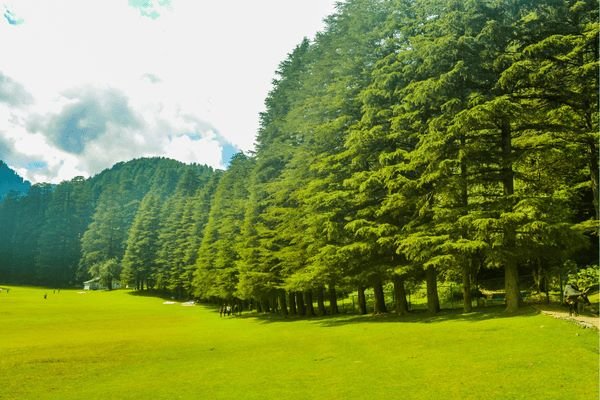
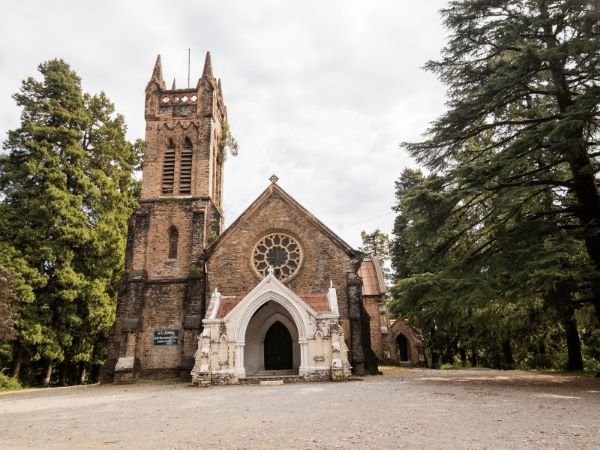
St John's Church
Built in 1863, St John’s Church is the oldest church in Dalhousie and assumes great historical significance apart from being a sentinel of Protestant belief in the region. Located in Gandhi Chowk, it tends to be a favourite amongst photographers because of the steady mix of beauty and history. A library neighbours the church, where one can find a lot of book about the past and the present of the town. Sunday Service performed at the St John’s Church is attended by the locals and tourists alike.
Embodying the Victorian era, the St John’s Church in Dalhousie is a reminder of the British regime in the region. The interior of the church is adorned with stunning glass paintings of St John the Baptist along with St Peter.
Satdhara Falls
The stunning Satdhara Falls is situated in Dalhousie, Himachal Pradesh. It is surrounded by fantastic views of the Chamba valley – with snow-covered ranges and fresh, green pine and deodar trees. ‘Satdhara’ means seven springs. This waterfall brings together the waters of seven beautiful springs – their meeting point being 2036masl, cascading magnanimously in unison. The water here is said to contain mica, which has medicinal properties to cure skin diseases. This is the perfect place for people in search of some tranquillity in their hectic life. The crystal clear water of the majestic Satdhara Falls gurgles with joy as little droplets bounce off the rocks onto us. The pleasant fragrance of wet mud fills the air with a refreshing scent as the water pours into a sparkling and smooth aquamarine pool. The sweet nougat smell of flower washes over you as the view of the white water surging and plunging from the height hypnotises you with its beauty. The sound of the crashing water is loud but pleasant. The edges of the fall hemmed with silver lines glisten in the sunshine.
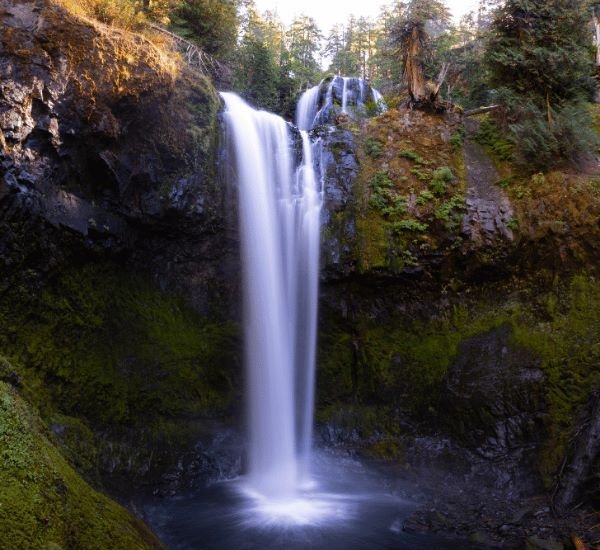
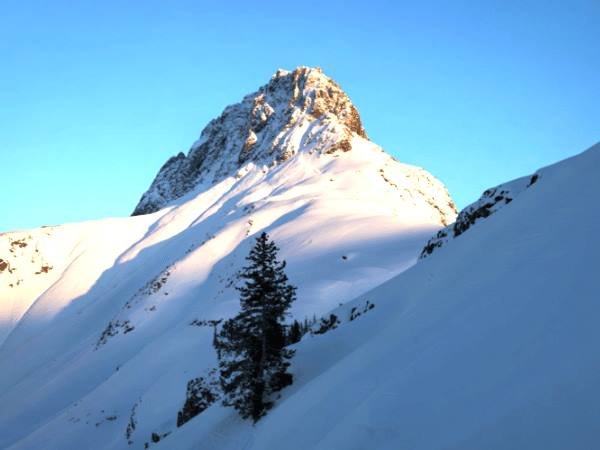
Dainkund Peak
Dainkund Peak, also known as the Singing Hill, is perched at an elevation of 2755 masl in Dalhousie. Being the highest point in Dalhousie, the peak offers a bird’s eye view of the astonishing verdant valleys and mountains. For nature fanatics seeking a serene and calm place, Dainkund Peak is worth exploring. The impression of tall Deodar trees and colourful flower valleys is everlasting. As you make your way upwards, you can hear the gentle breeze passing through the trees making a musical sound. The scenic charm of Khajjar lake and picturesque view of the mud houses amidst lush greenery is a treat to the eyes. The Pholani Devi temple and an Air Force are also major attractions of Dainkund Peak. Camping and trekking to the peak makes your trip all the more exciting.

